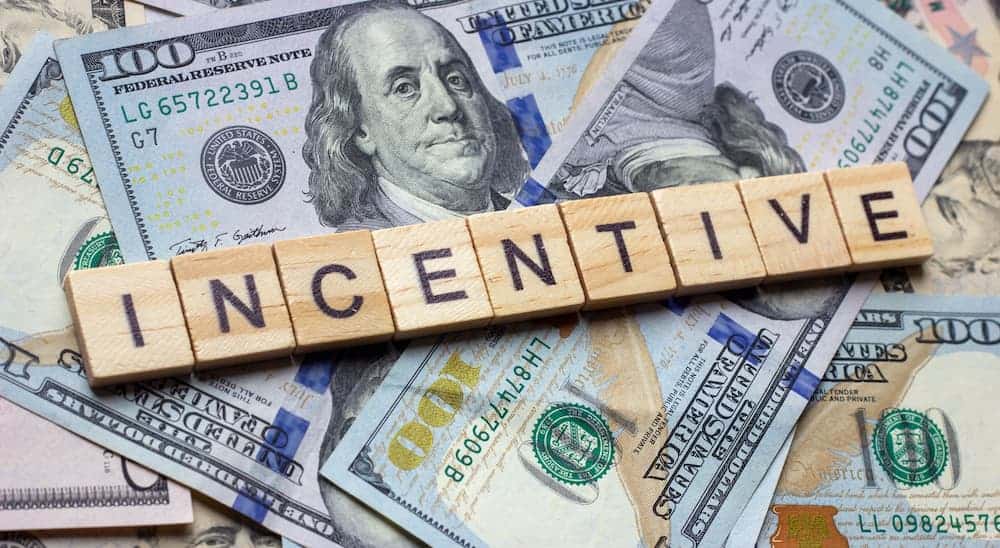It would be reductive to say that 2020 was a rough year for a lot of people because obviously, it was. While most of us were far more worried about our own survival than that of something like the auto industry, it’s important that major industries survive serious crises because that industry, faceless as it may be, is made up of millions of people. So, while I might not lose any sleep worrying about whether a billion-dollar company survives a plague, it’s good to know that the people working within the industry are able to get by.
From the factory workers building cars to the salespeople and support staff at dealerships, there was a very real possibility that all of these folks were going to be ruined by the nightmare of 2020 and the global pandemic. And yet, what happened instead was a turnaround where the industry not only survived but actually thrived. Some of this comes down to the nature of this pandemic and how it impacted different people in different ways – and some of it comes down to smart marketing and incentive programs by the companies and dealers.
Handling the Shutdown
Much like many other industries, the auto industry was heavily affected by the massive shutdown of businesses across the US in 2020. Auto plants shut down, so manufacturing came to a freeze, and dealerships shut down, so there was no way for people to buy vehicles even if they wanted to. Amidst all this was the sudden surge of uncertainty that came along with the shutdown. Would plants and dealerships reopen in a week or two? A month? Sometime next year? No one could say for sure, and everything was at a standstill.
But, the auto industry endured and handled the shutdown pretty well, overall. Eventually, car dealerships began to reopen and proudly advertised how they were handling health and safety – cleaning all public surfaces, wearing masks, and following state and federal guidelines for keeping their customers and employees as safe as possible. Manufacturing plants were a bit slower to open, but they did and also followed guidelines for masks and other procedures to keep their employees safe.
Sadly, these efforts weren’t always perfect, and some plants were run more effectively in terms of safety than others. But, manufacturers generally reacted well, and there haven’t been stories (so far) about abuse or apathy from plant managers in the auto industry. So, with everything back up and running, at least in some capacity, how was the auto industry able to appeal to the masses and make sales?
Shifting to Online Sales
This might be the single biggest point of success that allowed the auto industry to survive in 2020, though all of the steps taken here were vital. As dealerships closed and made car sales essentially slam to a halt, the manufacturers – and the people running the dealerships – realized they needed to find a way to keep selling cars. For some, the groundwork for this had been set long ago, while other businesses rushed to keep up. But in any case, the solution was simple: online sales.
There was a massive shift in focus in 2020 to selling and buying cars online – something that would’ve seemed absurd even a decade ago. In 2020, however, online car dealerships became far more prevalent and successful. For companies that had already been working on developing these kinds of markets, like the dealership behind Online.cars, for example, this didn’t require reinventing the wheel but was more about shifting greater focus to their online division.
Fear and uncertainty surrounded all kinds of retail business, and anything that could be done to reduce human interaction was often seen as a positive move. So making it easier and more efficient to shop for and buy a car online boosted customer confidence and brought the industry, overall, further into modern retail sales.
Incentives for Car Buyers
As online car sales began to increase and dealerships slowly began to reopen, they didn’t miss the opportunity to aggressively attract buyers. Despite the uncertainty of the public in general, some people were still doing well enough that they could afford to buy a new car. What’s more, the shutdown eliminated many sources of recreational spending – concerts, fairs, amusement parks, vacation destinations: everything was closed. People that had planned to spend money on these kinds of vacations suddenly had that money with nothing to spend it on.
So, many dealerships and manufacturers seized upon this opportunity and offered incredibly attractive incentives to bring in car buyers. Particularly for new-car buyers with good credit, the incentives were plentiful and made it seem silly not to buy a car during a global pandemic and financial crisis. And these efforts were hugely successful.
People returned to dealerships or went online to shop for cars, and they spent – especially on high-end and luxury models. Those with disposable income who suddenly found they had nothing to spend it on were treated to incredible deals that made it easy to lease or buy a new vehicle. And with this action, the auto industry not only saved itself in 2020 but managed to bounce back and be incredibly successful.
Focusing on the Used Market
Not everyone was sitting pretty during the turmoil of 2020 amid the shutdowns and pandemic, so the auto industry worked hard to bring in a wide range of buyers. This meant a focus on the pre-owned market, which dealerships were quick to lean toward and make even more attractive for customers. There was a clear, succinct effort to make used cars from a dealership as compelling as possible for potential buyers, to pull away from local or online postings of used vehicles from private sellers, and bring people to dealerships.
In fact, online sales of used models was a particularly lucrative market for the industry in 2020, and dealerships that shifted toward more online sales found it quite successful. Even third-party sites not directly affiliated with dealerships found that their online sales of used models were boosted in 2020. Even in the most uncertain of times, people still needed a way to get around, get to work when businesses reopened, and to go buy groceries. So offering used models at reasonable prices, and making them easier than ever before to get, was a win for everyone.
Public Relations and Marketing
This may seem a bit shrewd, but marketing exists and is successful for a reason – people want to know what the companies they buy from care about, or at least say they care about. There was an undeniable outpouring of support from auto manufacturers toward people, including their employees and customers, amidst the shutdown and crisis. While other businesses seemed to lean toward the sleazier side of humanity (looking at you, Gamestop, and your insistence that you’re an essential business while providing your stores with zero cleaning supplies), dealerships and auto manufacturers were quick to demonstrate their values.
From general support to advertising campaigns like the one Jeep ran, which encouraged people to stay home and reminding them that the trail would still be there after things returned to normal, the auto industry truly seemed to care about its customers. Whether it does or not isn’t important – the companies made an effort to show support and take action for their customers and employees alike. And with so much uncertainty going on, people noticed and remembered when they were looking to get a vehicle.
Adapting is the Way to Stay Alive in the Market
While the auto industry took loans from the government to stay alive in 2020, many of them have already paid those back due to how successful they ended up. It’s a different look from the last financial crisis and indicates the heads of these companies may have learned a thing or two. Remaining adaptable to current conditions and finding attractive and innovative ways to sell products is what not only allowed the auto industry to survive 2020, it’s what allowed the auto industry to thrive in 2020.






